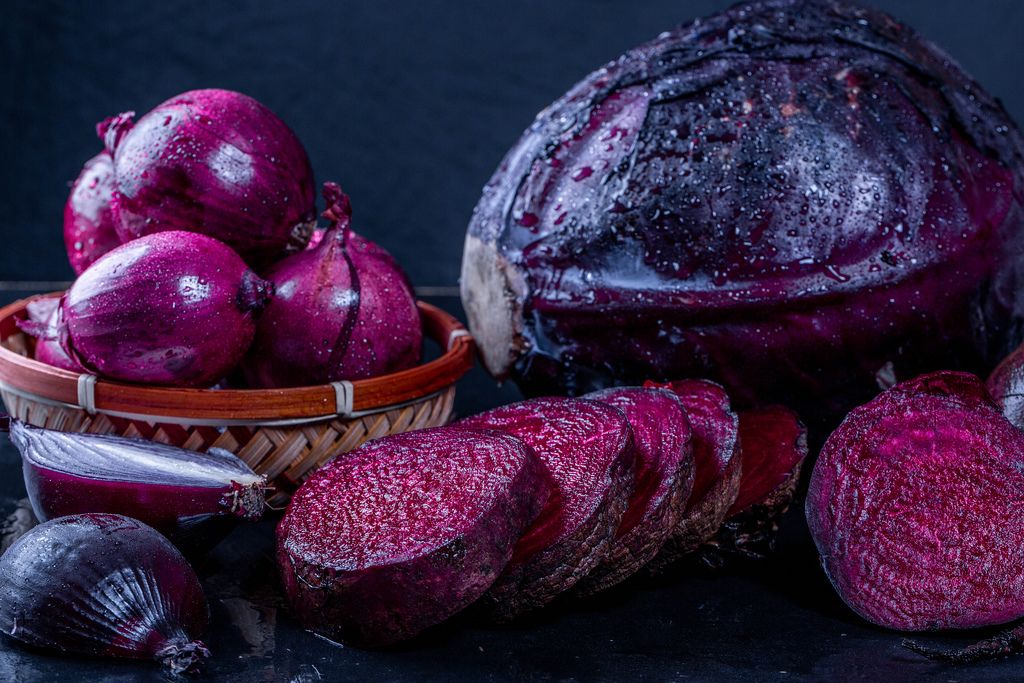Purple: The Color of Kings, Prince and Healthy Foods

Hundreds of years ago, purple-colored clothing was tough to come by. The dye used on fabric came from the Phoenician city of Tyre (now in Lebanon) and was acquired from either Mediterranean snails or mollusks (wait, is a snail a mollusk?).
Thousands of these poor mollusks were required to produce a small amount of dye, making purple clothing so expensive and rare that only kings, pharaohs and emperors wore it. That tradition passed through the ages to Elizabethan England where the famed queen passed laws that forbade those outside her immediate family from wearing the color. It is also thought that the “purple one” aka Prince, was fond of the color due to his royal name.
That brings us to the true topic of this week’s post, the nutritional value of purple-colored foods and yes, there are more out there than you think (I’ll limit my discussion to six of them). Color can be an indicator of a food’s nutritional value and in this case, purple (red and blue too) indicates the presence of an antioxidant called anthocyanin which studies show can improve cardiovascular health, stave off certain cancers and improve cognition while inhibiting the onset of dementia.
Generally speaking, the darker the hue, the higher the concentration of anthocyanin in the food. And while most people know eggplant is naturally purple, many shy away from other purple veggies, such as carrots, asparagus and potatoes because they believe they have been genetically modified.
That is not the case, with the only exception being purple tomatoes which have been genetically modified to improve taste and longevity. So, the next time you see some purple Brussel sprouts, give them a try knowing that’s their natural color. Anyway, here’s six purple fruits and veggies to get you started…
- Beets or, as they’re sometimes called, beet roots (the round part that grows underground as opposed to the greens that grow above). Aside from anthocyanin, beets also contain folate or vitamin B9, necessary for normal tissue growth and cell function and is very important for pregnant women; potassium which can help reduce blood pressure and improve heart health; iron which helps transport oxygen throughout your body and prevents anemia; and vitamin C which supports your immune system and skin health.
- Concord grapes which are native to North America and are the main ingredient in many jellies, juices and wines, contain vitamins C and K, a key nutrient for blood clotting. However, it is their antioxidant content that makes them so good for us. Studies have shown they reduce the effect of LDL (the bad kind) cholesterol and can lower the risk of strokes and heart attacks.
- Eggplant which, by the way, is considered a fruit rather than a veggie. Chock full of antioxidants, eggplant can help control blood sugar levels, reduce your risk for heart disease, fight cancer, and help control your weight through its high fiber content. It is also very versatile and is used as a meat substitute in many recipes.
- Purple (aka red) cabbage is a bit healthier than its green sibling due to the antioxidants it contains. It also supplies its consumer with vitamins C, A, B6, and K as well as potassium, thiamine, riboflavin and the heart healthy compound, sulforaphane. All these nutrients promote strong bones, fight certain cancers, and improve gut health (especially if fermented into sauerkraut).
- Purple yam or ube as it is also called in its native Southeast Asia. Unlike most purple fruit or veggies, ube is purple on the inside rather than the out. Aside from antioxidants, ube also contain vitamins C and A, fiber, and potassium. Two of the antioxidants present in ube have shown signs of preventing colon, lung and prostate cancers, and help control blood sugar, lower blood pressure and lessen the symptoms of asthma.
- Purple cauliflower not only is healthy for you, it looks pretty too. I realize this is becoming a broken record, but purple cauliflower has plenty of fiber, vitamins C, K and B6, folate, and manganese. Like its purple brethren, it too can help with heart and gut health and fend off dementia and it also can improve eye health.
As mentioned in my intro, there are plenty of other purple foods out there to keep you busy for quite a while. Others not mentioned include red onions, figs, plums and purple corn. Perhaps all those emperors, kings and queens should have made purple fruit and veggies, rather than clothing representative of royalty, they might have lived healthier and longer lives.
(Photo by Marco Verch, used under Creative Commons license)
You must be logged in to post a comment.